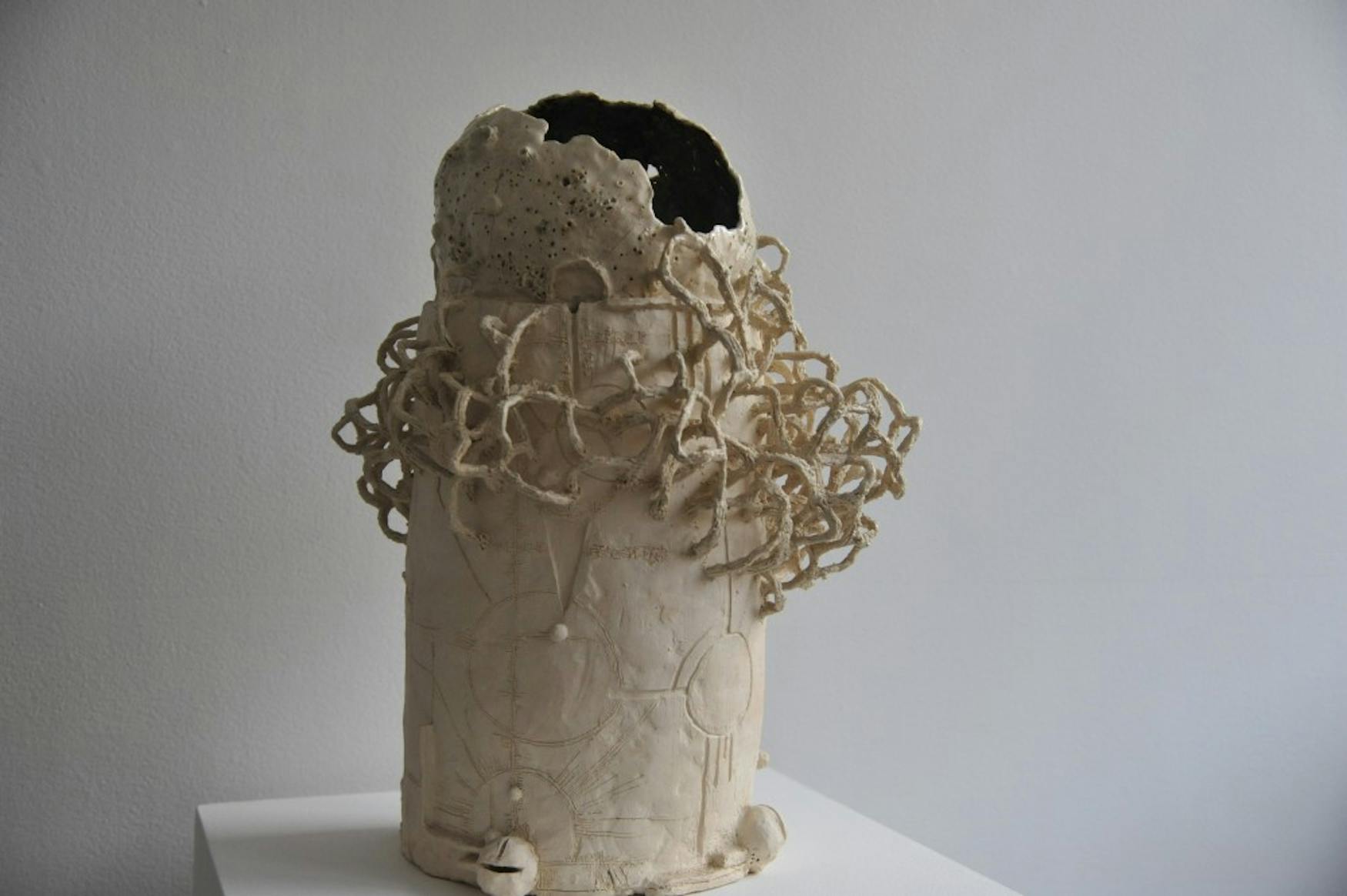“Tea of Oblivion” emits themes of nature through abstraction
The walls of the Kniznick Gallery of the Women’s Studies Research Center are now embellished with black-and-white photos of elements from nature and pedestals topped with earth-colored abstract sculptures.
This past Friday was the opening of “Tea of Oblivion,” an exhibition encompassing the artwork of ceramic artist Heidi Lau and photographer Megan Ledbetter.
The exhibition is based on an old Chinese folktale about Meng Po, the goddess of reincarnation. Throughout the exhibition, Lau and Ledbetter use their work to exemplify the tale and the connection to nostalgia by incorporating elements from their cultures.
According to the description of the exhibit, “Lau’s ceramic sculptures and Ledbetter’s photography are rich with details collected from various earthly sources and suggest a threshold between the physical and intangible.”
The “Tea of Oblivion” refers to a tea made from herbs collected from ponds and streams that is given to souls passing on to another life. The tea guarantees that memories and events from previous lives are forgotten.
The photos and sculptures were not explicit representations of recognizable objects from nature but rather vague collections of nature-like elements.
A group of Lau’s sculptures, for example, were green and brown in color and scaly in texture. They looked like tree stumps or dinosaur feet. None of the sculptures actually exemplified tangible objects and appeared to resemble collections of rocks, branches or moss. The only sculpture that was really distinct from the others was a ceramic tea set, representing the titular theme.
Ledbetter’s photos — all of which were black and white — contained recognizable elements from nature, but many of them displayed it in a vague or unrecognizable light.
For example, there was one photo of a jar with a very ambiguous object in it, and a few photos were of textural patterns that were taken very close-up, to the point where it was unrecognizable exactly what the pattern was of.
Some of them looked much more like paintings, to the extent where it was unclear whether or not they actually were photos. The significance of these painting-like pictures amist the photos representing vivid, tangible details from nature was very vague.
The ambiguity of the exhibit did not take away from how impressive it was — both the sculptures and pictures were very aesthetically pleasing and contained lots of rich, captivating details. Based on the description of the exhibit, it is possible that the lack of clarity in these pieces of art is meant to represent the story of Meng Po. If, as the description says, the artworks “suggest a threshold between the physical and the intangible,” perhaps the vagueness of the art is symbolizing the point in which fantasy meets reality in the world of nature. For example, while it is unclear exactly what any of Lau’s sculptures are actually portraying, the texture and colors of the sculptures evidently represent qualities of nature.
The same can be said for the photos, where the arrangement of the elements within the pictures is unfamiliar, but they contain vivid traits that are recognizable and feel very real to the viewers. These pieces of art seem to be symbolic of the “threshold” that the description mentions — that is, the point in which tangible elements of nature and life can be present concurrently with the unknown.
This exhibit did not display a large amount of work and lacked elements that are present in many art exhibits, such as descriptions of individual pieces of art.
However, the simplicity of the exhibit really lent itself to the story that it was telling and showed that art is not always about the quality of individual pieces but about how several parts work together to form a theme, proving that art can speak in ways that words cannot.




Please note All comments are eligible for publication in The Justice.